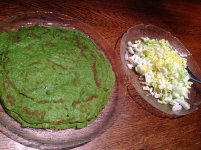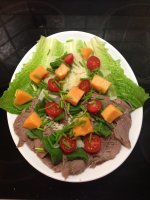Huh ?.Lots of difficulties with the word 'bottom', eey Danny boy ?
Dan.
- Cal, 08/06 : Range and OTR microwave being delivered.
- Cal, 12/06 : Image of a standard OTR cabinet
'Huh' does indeed cover it quite well.
- Cal, 12/06 : Image of a standard OTR cabinet
'Huh' does indeed cover it quite well.
If it means anything, I didn't know the term till a couple months ago.
When the sales woman asked me whether I wanted it on the counter or OTR, my heart began to beat a little faster. 🙂
When the sales woman asked me whether I wanted it on the counter or OTR, my heart began to beat a little faster. 🙂
When the sales woman asked me whether I wanted it on the counter or OTR, my heart began to beat a little faster.
That scrumptious, huh ?
Let me guess, your first inclination was to pick OTR.
(Over The Rainbow https://www.youtube.com/watch?v=V1bFr2SWP1I Damn, he's so fat, I almost/always feel like doing him)
Last edited:
(Over The Rainbow https://www.youtube.com/watch?v=V1bFr2SWP1I Damn, he's so fat, I almost/always feel like doing him)
You missed your chance, 54.1 stone impressive.
[/ATTACH]This was a try for spinach omelettes filled with several veggies , was not bad 😉
The shrimps were additional for those who like them.
The shrimps were additional for those who like them.
Attachments
Last edited:
Hm, i cut the boiled meat into very thin slices, apx 1mm or lesser and it was cold.
So i believe its a carpaccio. Several veggies, melon, cheese parmiggiano sliced and a sauce with olive oil and balsamico etc. Accompagned with fresh *Flute* , this french style white bread.
Emincé we usually cut veal or pork into smaller pieces and then fry them in the pan with other stuff and cream, ending as *Zürcher Geschnetzeltes* and serve it with Rösti, this count as a very national dish here.
The boilded meat was the best one i ever did, really soft and tasteful, and i like it a lot just with salt and Krene, then 500 grams left over ending like showed in the pic.
I forgot to mention, there was also a nice Nobile de Montepulciano 😀
So i believe its a carpaccio. Several veggies, melon, cheese parmiggiano sliced and a sauce with olive oil and balsamico etc. Accompagned with fresh *Flute* , this french style white bread.
Emincé we usually cut veal or pork into smaller pieces and then fry them in the pan with other stuff and cream, ending as *Zürcher Geschnetzeltes* and serve it with Rösti, this count as a very national dish here.
The boilded meat was the best one i ever did, really soft and tasteful, and i like it a lot just with salt and Krene, then 500 grams left over ending like showed in the pic.
I forgot to mention, there was also a nice Nobile de Montepulciano 😀
I just purchased a new pan waiting to source sota ones in a Professional coocking shop at good price !
It is a new marketing stuff I bought just for curiosity as it was cheap (I hate this idea because it's both money wasted and pollution...) ! So it is rock stone surface made by Bialetti and also has bobsleg property with foods as Tefals to allow jumping of the eggs towards the plate without disaster !!
But for sure I will comeback soon for a good proved material (old ones)!
It is a new marketing stuff I bought just for curiosity as it was cheap (I hate this idea because it's both money wasted and pollution...) ! So it is rock stone surface made by Bialetti and also has bobsleg property with foods as Tefals to allow jumping of the eggs towards the plate without disaster !!
But for sure I will comeback soon for a good proved material (old ones)!
Last edited:
I was wondering where Groove went, glad to have you back.
I think Jacco may be right about the Emince, at least in my part of the world. It's done with leftover roast. Carpaccio is sliced thinly and is raw and marinaded. Interesting how it means different thing depending on where you are.
I think Jacco may be right about the Emince, at least in my part of the world. It's done with leftover roast. Carpaccio is sliced thinly and is raw and marinaded. Interesting how it means different thing depending on where you are.
Emincé literally means sliced as thinly as possible, e.g. as in the best Bayonne Ham or Prosciutto.
Not really, éminçé means in Cuisine environment : make slides of equal thickness : but not the as thin as possible ! It is firstly for vegetables, by extension it apllies to meat, fisch, etc ! As thin as possible is finely named by the term carpacio : you may see through the slide, as japoneese can do and of course italians with beef !
It's corret to cut vegetables for a Gratin dauphinois to say : make an émincé de pommes de terres (potatoes).
Notice when you have a meat called éminçé, even if you have the idea of slides, the meaning by extension is more : several part of equal, near sizes (cutedin littlier parts from a part of the animal): but which are not sometimes plate anymore (because of the cooking in some receipes. but when it is served ib a restaurent, the plate can have the name éminçé yet; for instance "Emincé de volaille à la crème"). But strangely with some receipes : like the Gigot de bœuf en tranche : we don't talk of éminçé ! We talk of tranches from the verbe "trancher" !
The jambon is not éminçé, at least in french language.
Technically when you cut a head with a guillotine, the exact terme is an "évincé" ! But it is just with political meat !
It's corret to cut vegetables for a Gratin dauphinois to say : make an émincé de pommes de terres (potatoes).
Notice when you have a meat called éminçé, even if you have the idea of slides, the meaning by extension is more : several part of equal, near sizes (cutedin littlier parts from a part of the animal): but which are not sometimes plate anymore (because of the cooking in some receipes. but when it is served ib a restaurent, the plate can have the name éminçé yet; for instance "Emincé de volaille à la crème"). But strangely with some receipes : like the Gigot de bœuf en tranche : we don't talk of éminçé ! We talk of tranches from the verbe "trancher" !
The jambon is not éminçé, at least in french language.
Technically when you cut a head with a guillotine, the exact terme is an "évincé" ! But it is just with political meat !
Last edited:
I need advice. When using the micro/convect feature, it alternates between them. Should I be preheating the oven first before setting it to combo?
If it is on a more than 16A fuse you can.
Grandma never used micro to cook Foie Gras. But one of the best way to cook it is plastic to cover it + micro waves if you are precise with timing !
But as now the material is less good most of the time (not always, sourcing is the key), whatever, induction, micro, oven, phase, LR4... it will not help you but making complex mix.... is it better ? I dunno !
Of course I joke, as I'm fond of the cheese burger than Mc Donald is making; also with the tomato meat bullets of pork/lamb of grand Ma, this is the more concistency taste I know (yes, more than the industrial Nutella.... but not than the Lipton Yellow tea bags : the most concistency taste of the universe... !)
Grandma never used micro to cook Foie Gras. But one of the best way to cook it is plastic to cover it + micro waves if you are precise with timing !
But as now the material is less good most of the time (not always, sourcing is the key), whatever, induction, micro, oven, phase, LR4... it will not help you but making complex mix.... is it better ? I dunno !
Of course I joke, as I'm fond of the cheese burger than Mc Donald is making; also with the tomato meat bullets of pork/lamb of grand Ma, this is the more concistency taste I know (yes, more than the industrial Nutella.... but not than the Lipton Yellow tea bags : the most concistency taste of the universe... !)
Last edited:
I ran a new 15A 120V line that has only the microwave on it.
The Convection is 1500W.
The Microwave is 900W.
They do not run simultaneously on combo, they alternate.
My question was whether or not to preheat it when roasting in combo mode. I have read through this manual, a few other brands manual and gone to cooking sites. Nowhere is there mention of preheating it in combo mode, only in convection mode.
The Convection is 1500W.
The Microwave is 900W.
They do not run simultaneously on combo, they alternate.
My question was whether or not to preheat it when roasting in combo mode. I have read through this manual, a few other brands manual and gone to cooking sites. Nowhere is there mention of preheating it in combo mode, only in convection mode.
Too complicate for me, I never cook like this ! What stuff do ytou want to heat ? A tarte, a gigot, a fisch ragout à la Bouillabesse ?
Suivant the receipe and If meat and not ragout ! I try to roast before then cooking after. Roasting first keep th juice in the meat by making an armor which keep the juice and flat favors. According to the style of meat (if good) it's ok for my own tastes..
I surmise roasting alone (e.g. BBQ give some other taste : too much heating over around 260° is not so good for the flavor while it can mask the material if you add sauces after on it!
I just don't understand why it alternates, is it a new discover ? Is there a goal to allow superior cooking (with most of the time worst material we have today - of course not always but too often !) ????
Suivant the receipe and If meat and not ragout ! I try to roast before then cooking after. Roasting first keep th juice in the meat by making an armor which keep the juice and flat favors. According to the style of meat (if good) it's ok for my own tastes..
I surmise roasting alone (e.g. BBQ give some other taste : too much heating over around 260° is not so good for the flavor while it can mask the material if you add sauces after on it!
I just don't understand why it alternates, is it a new discover ? Is there a goal to allow superior cooking (with most of the time worst material we have today - of course not always but too often !) ????
Last edited:
- Home
- Member Areas
- The Lounge
- The food thread

